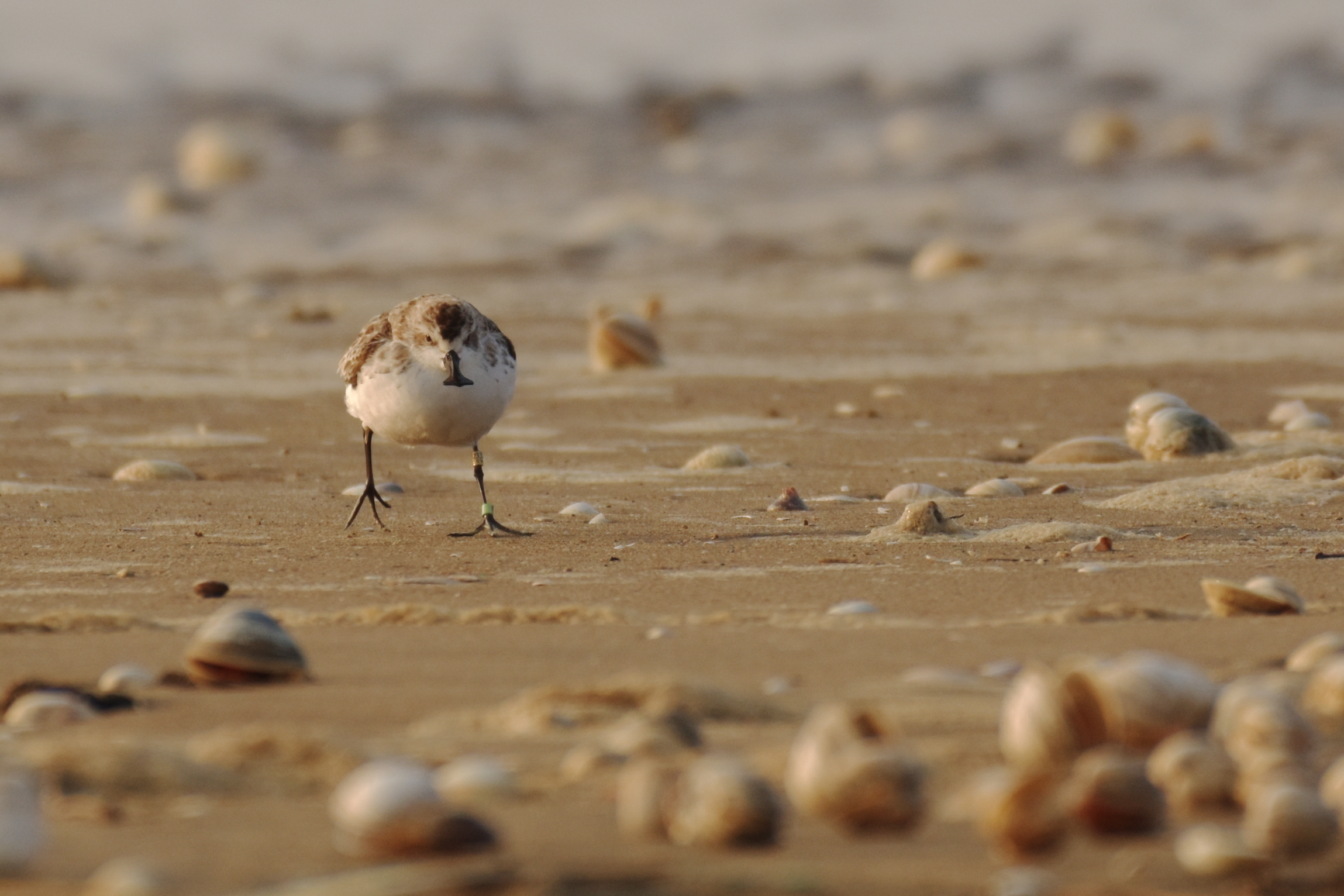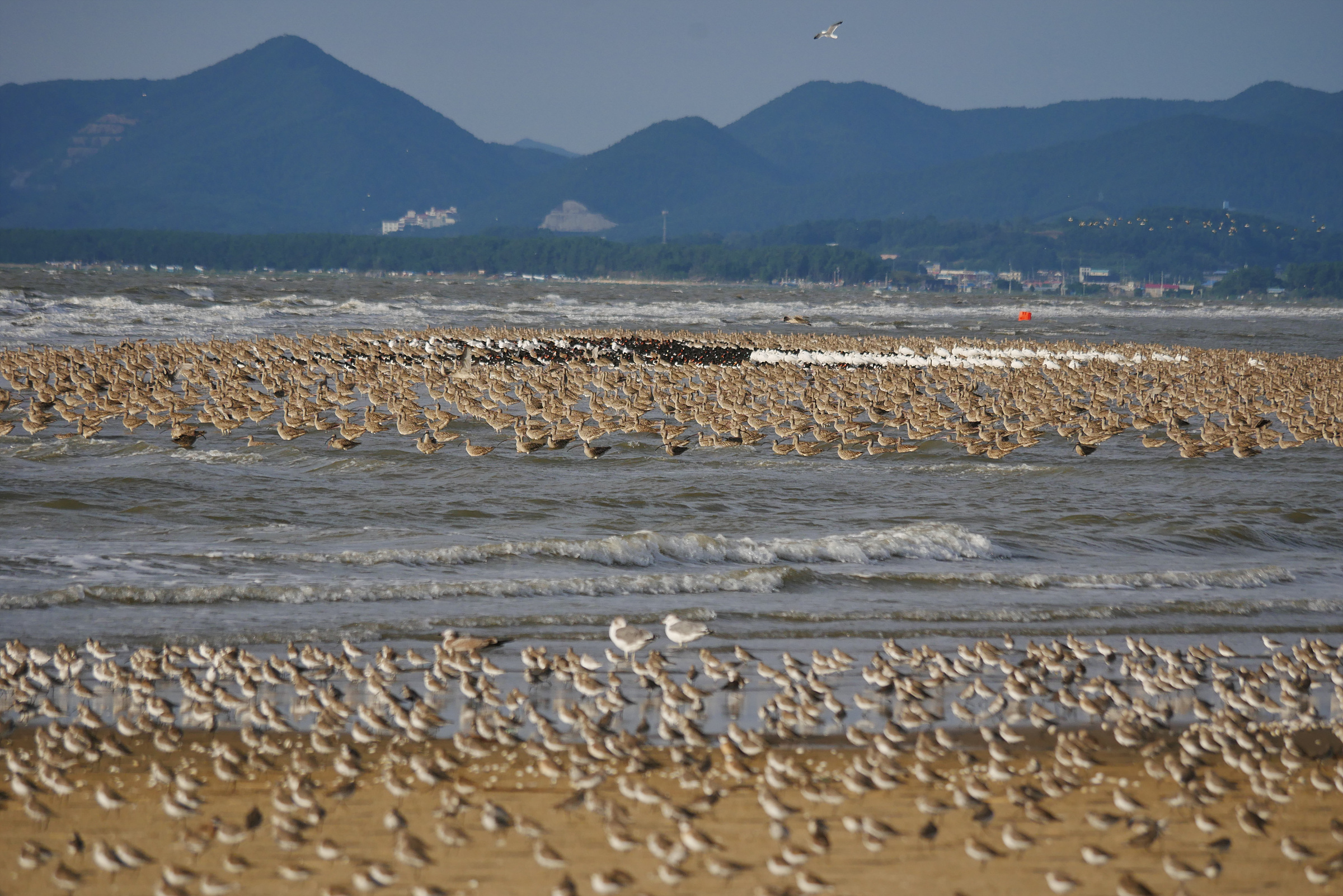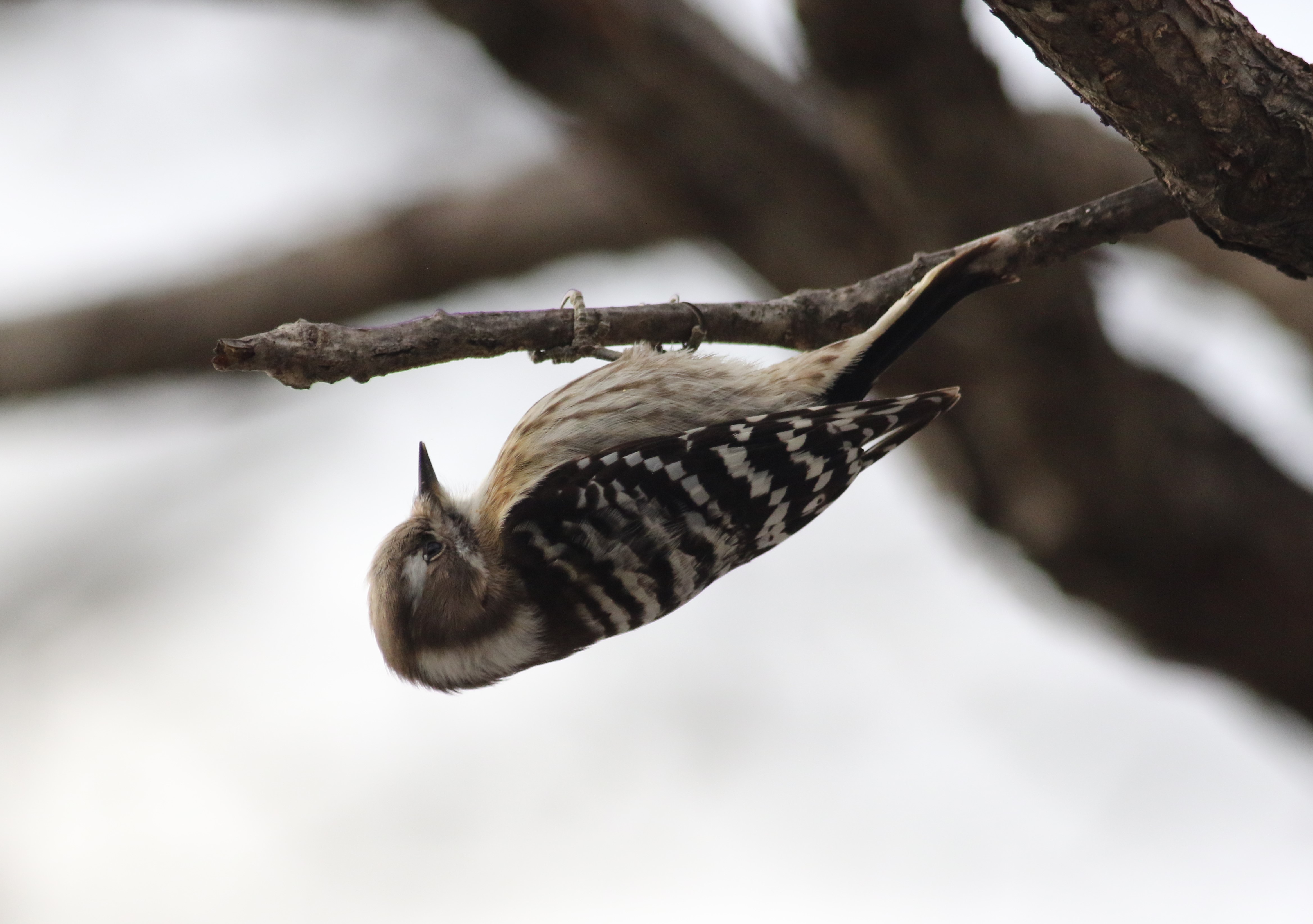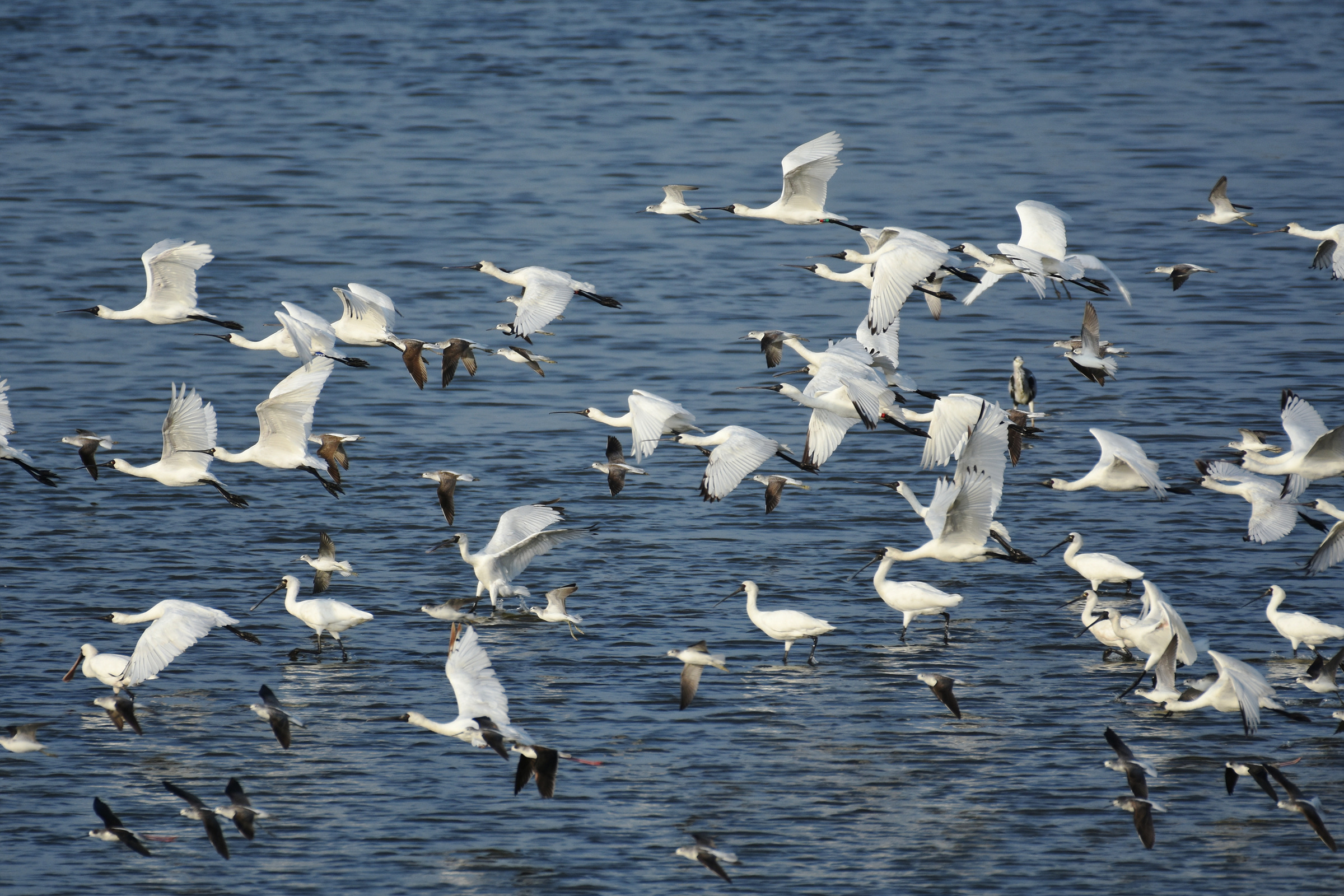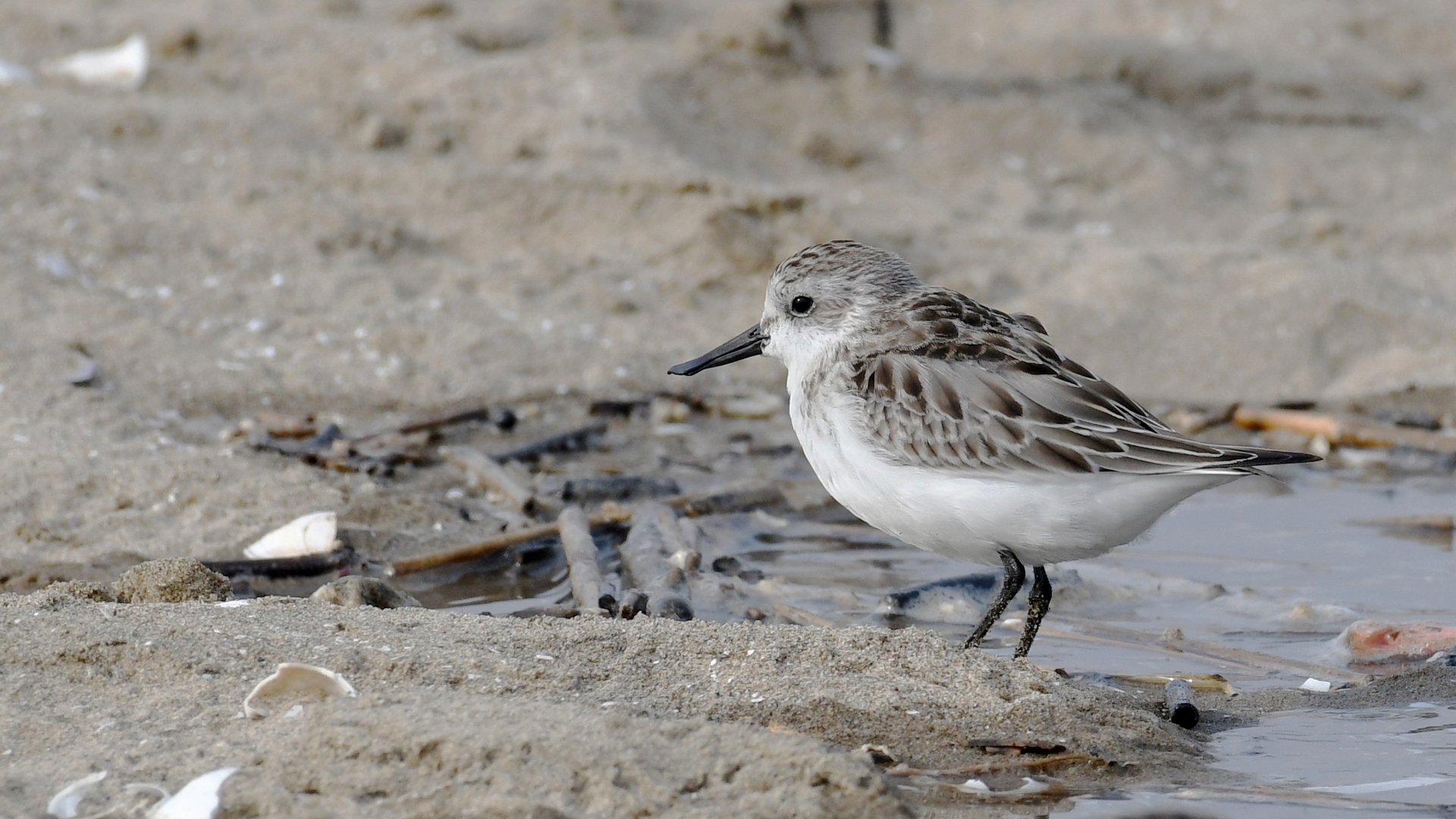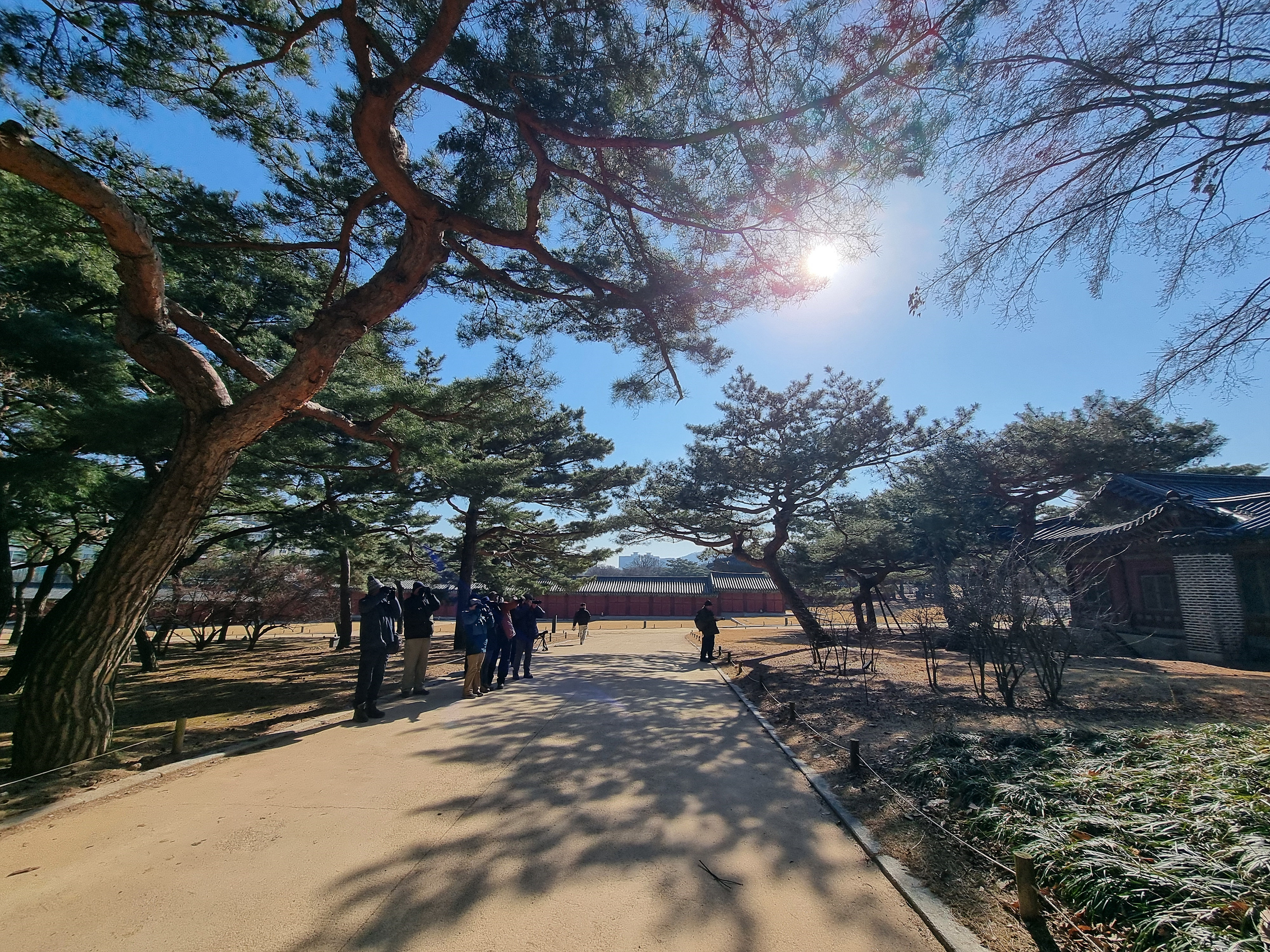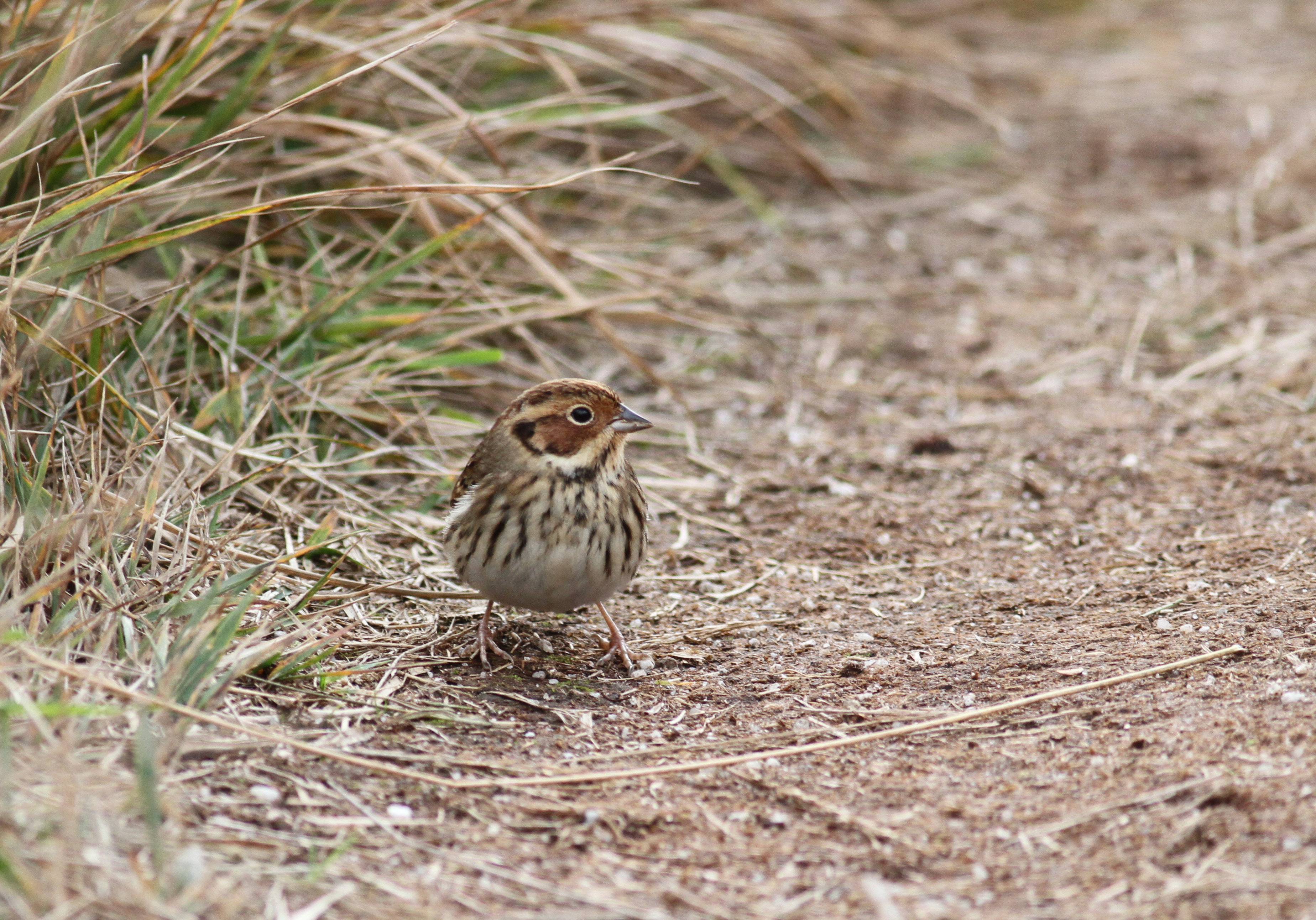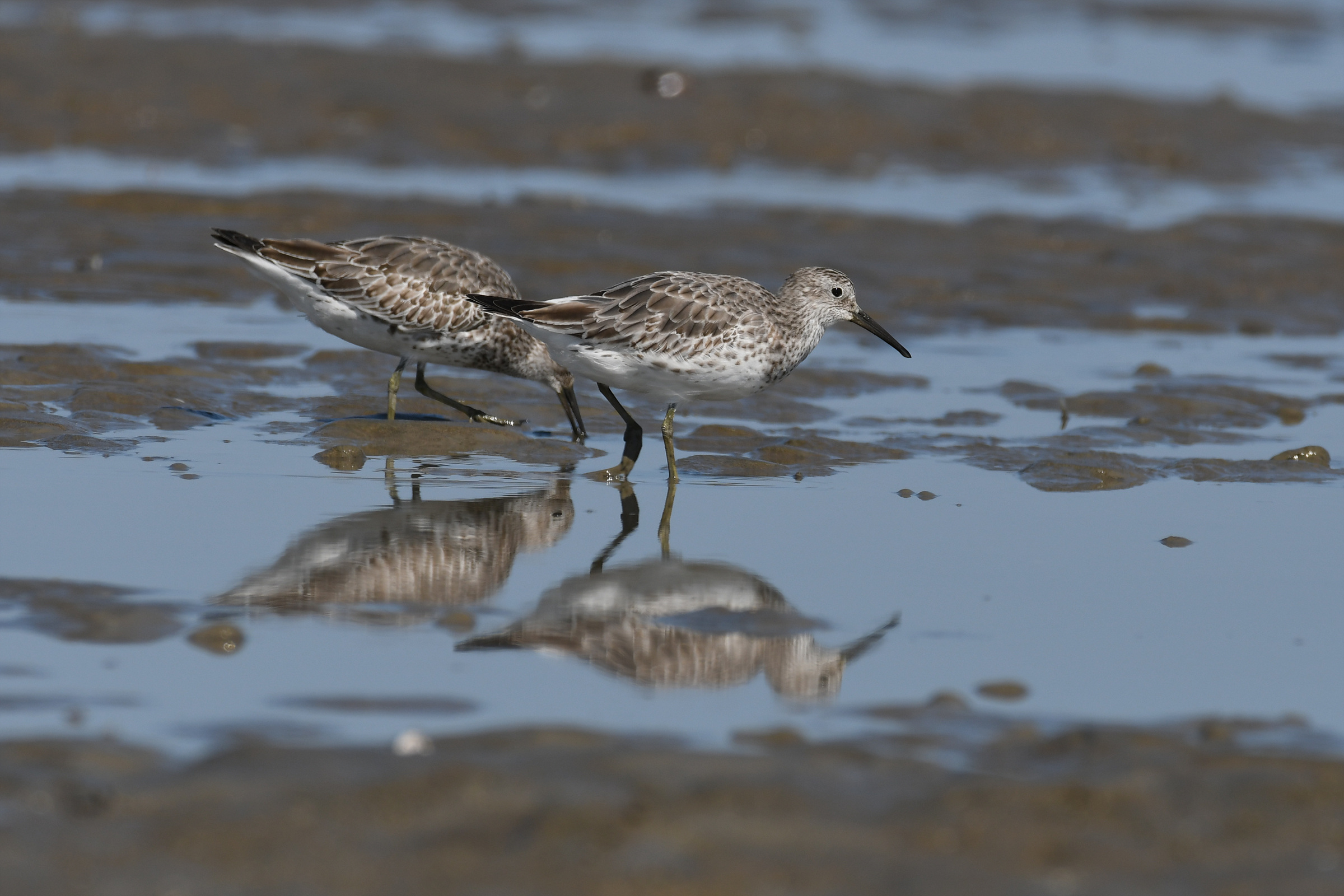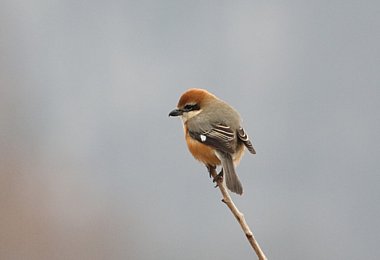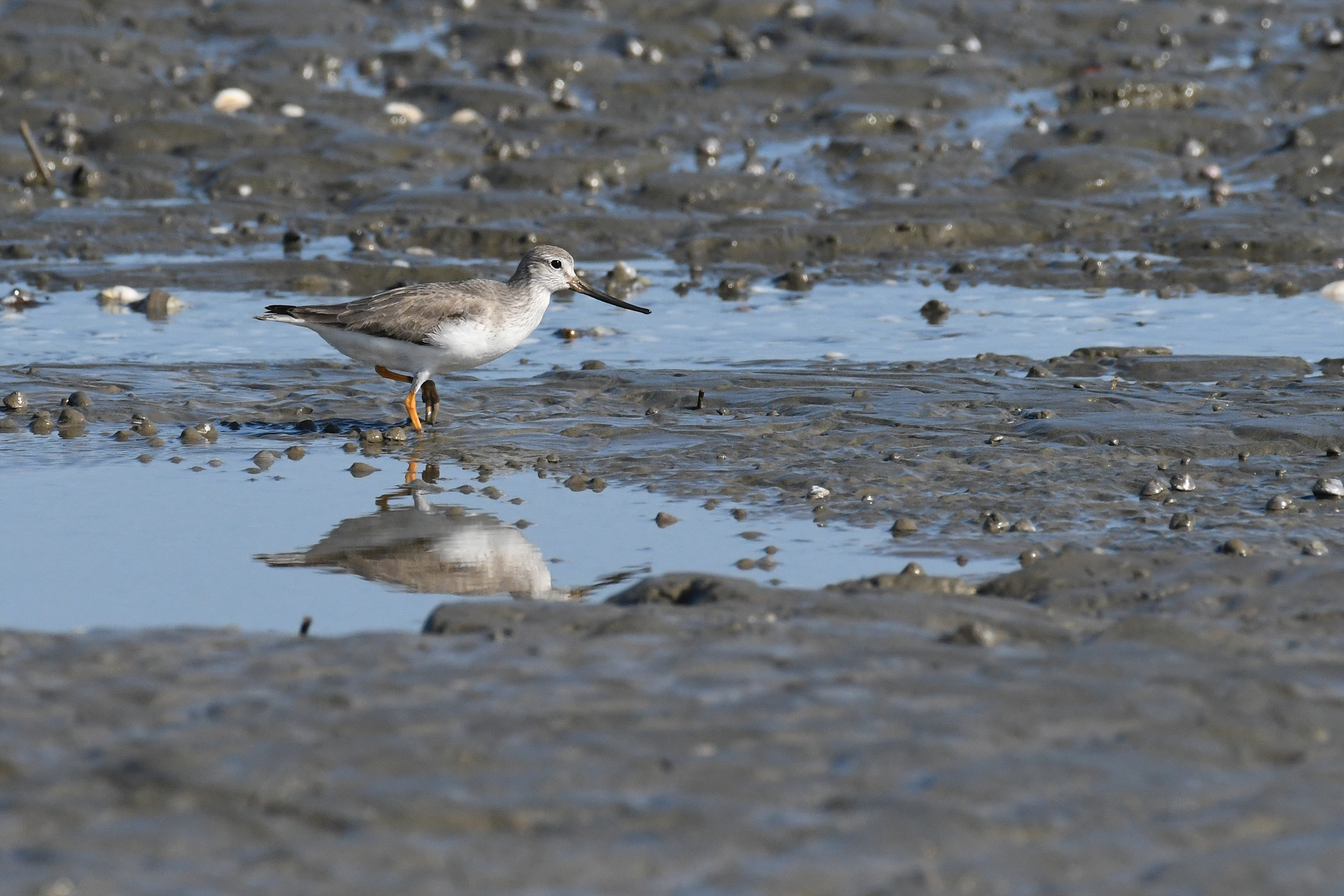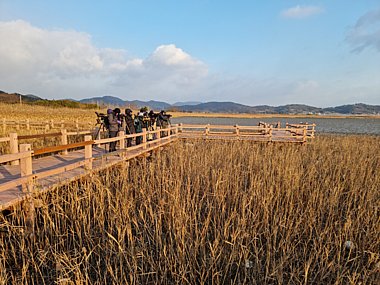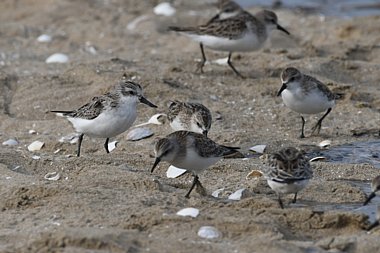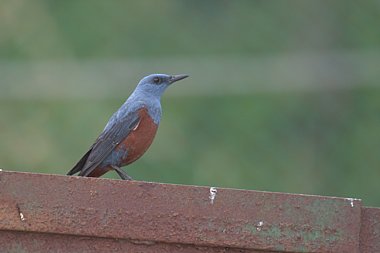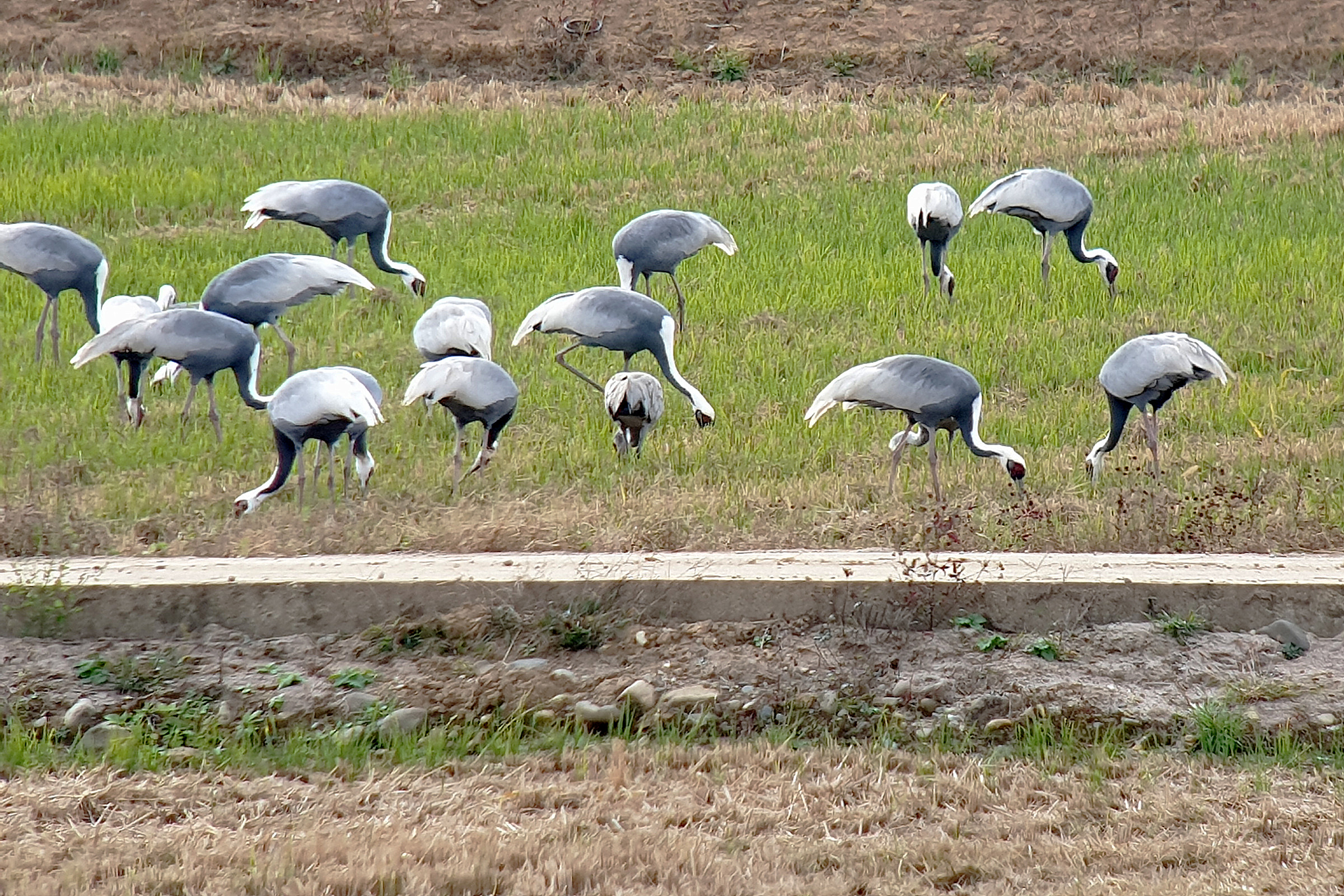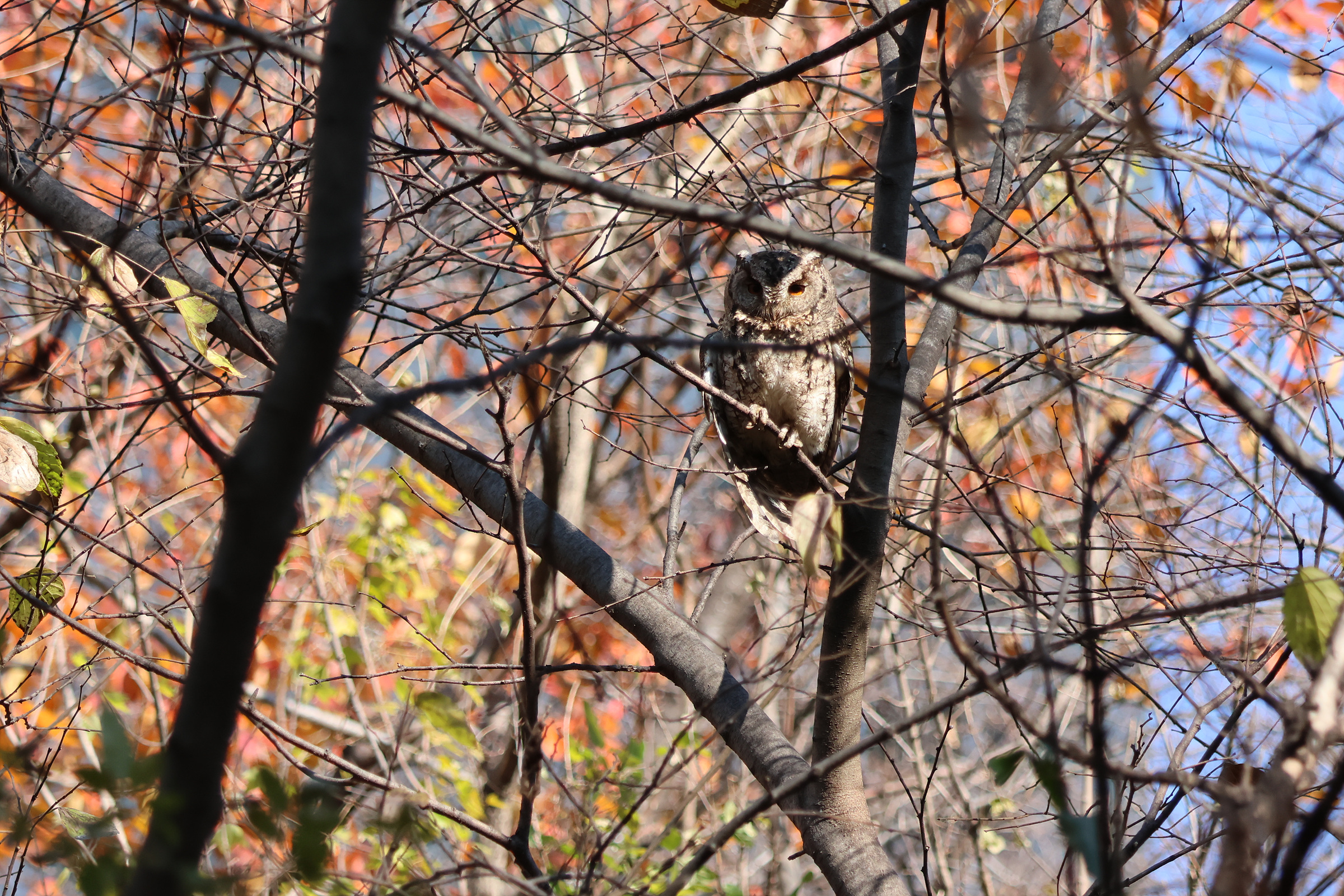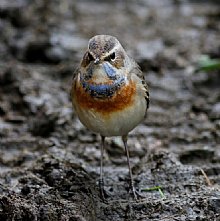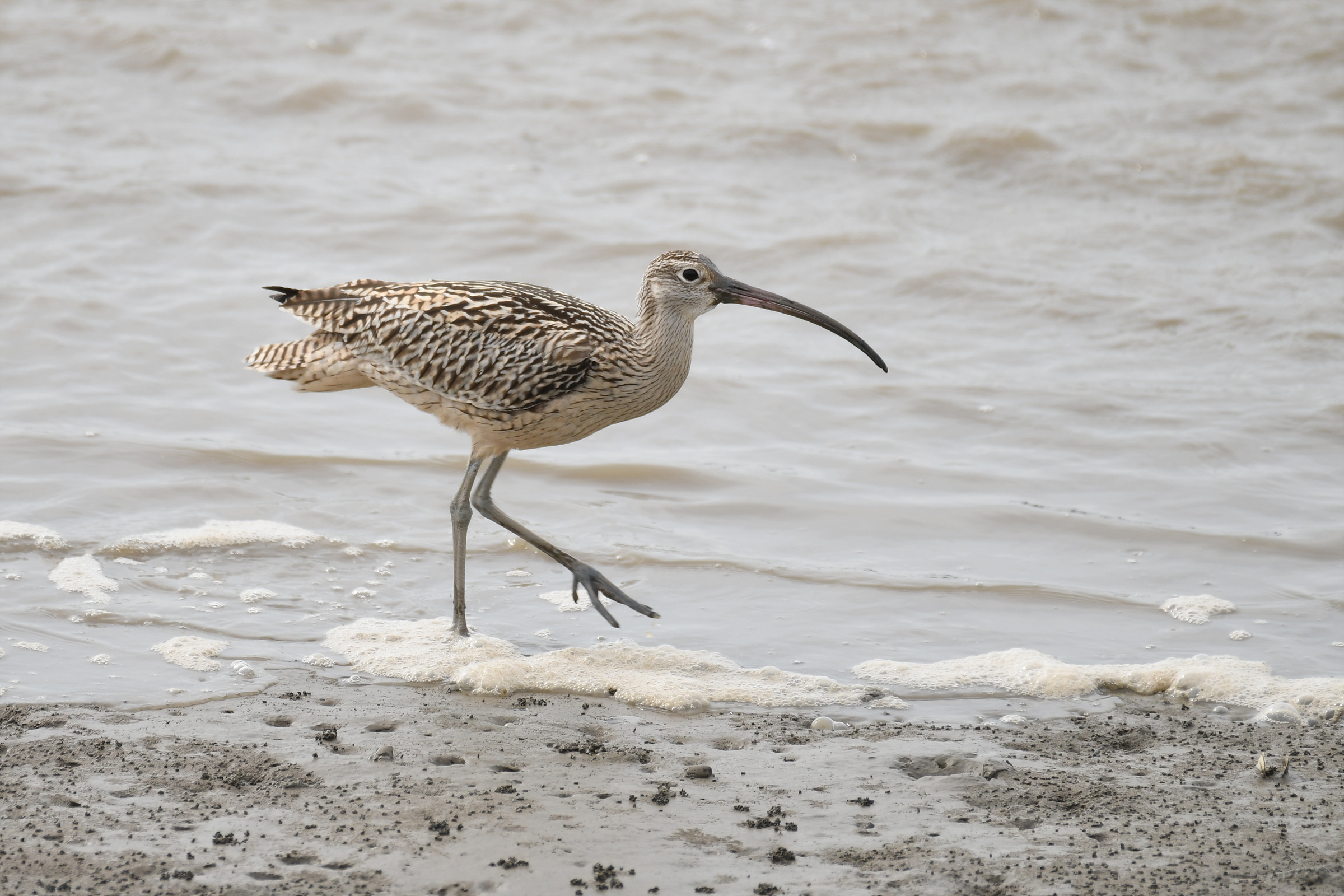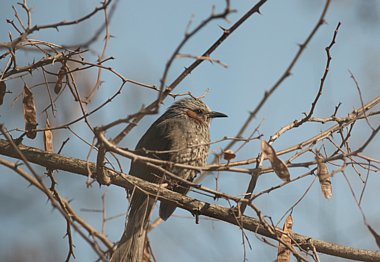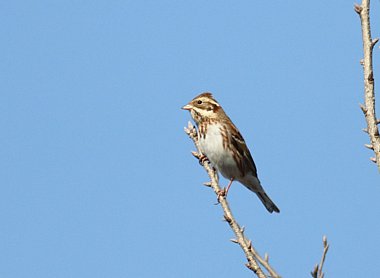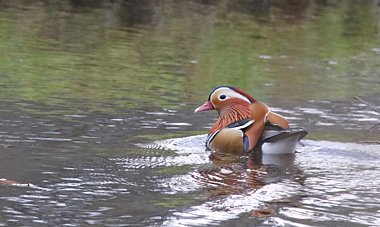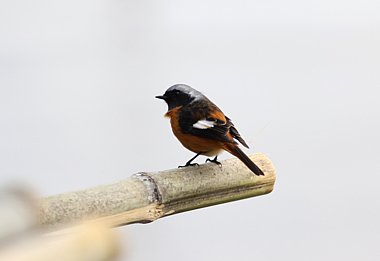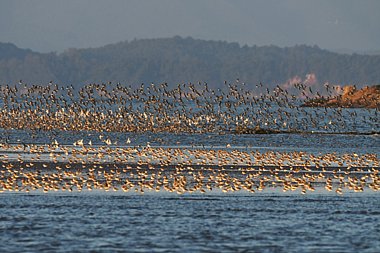NEW! South Korea - Autumn Migration and Spoon-billed Sandpiper
Yellow Sea migration, iconic waders and more on this exciting new tour to a birding hidden gem!
| Destination | |
|---|---|
| Focus | |
| 2027 Dates | |
| Duration | 13 Days |
| 2027 Price | Price TBC |
| Max Group Size | 12 |
- Free Bird Guide
FREE copy of Birds of East Asia with every room booked on this holiday.
- Enquire
South Korea is a fascinating country for birders, its avian possibilities only recently revealed with undoubtedly many more still to be discovered! One such recent finding has been the migration route of Spoon-billed Sandpiper via the Eastern Yellow Sea, with a small number now found annually on Yubudo Island off the West Korean coast. Arguably the world’s most sought-after wader, Spoon-billed Sandpiper has fascinated ornithologists for generations since its remote breeding grounds in NE Russia were first discovered. It is also one of the most endangered birds in the world, and Yubudo offers a good chance to see them, as well as being a fabulous location to observe migrant waders.
On this pioneering autumn tour we also visit Baengnyeong, a large island north west of Seoul with a growing reputation among birders. We spend three days exploring this newly discovered stop off point for passerines and flyway from raptors. As with any migration tour, the weather plays a part in what we may see, though a large variety of warblers, chats, pipits, finches and buntings are likely. In the right conditions, Oriental Honey Buzzard, Pied Harrier, Grey-faced Buzzard, Eastern Black Kite, Eurasian and Japanese Sparrowhawk, Amur Falcon and others pass overhead, while the coasts off Baengnyeong are also worth investigating for Stejneger's and Black Scoter plus Japanese and Pelagic Cormorant.
As well as spending time on the west coast and its islands, we follow the Han River inland to explore wetlands on the edge of Seoul and the interior forests and mountains north of the capital city. We spend a day birding the Civilian Control Zone on the South Korean side of the DMZ, perhaps the best crane watching site in all of Asia. White-naped Crane will be arriving, while other incoming winter birds include thousands of Taiga and Tundra Bean and Russian White-fronted Geese as well as raptors and buntings. Other likely species on this tour include Black-faced Spoonbill, Chinese Egret, Siberian Sand-plover, Great Knot, Far Eastern Curlew, Saunders Gull, Japanese Pygmy Woodpecker, Varied Tit, Daurian Redstart, Azure-winged Magpie, Yellow-throated and Rustic Bunting, with chances of Baikal Teal, Scaly-sided Merganser, Oriental Stork, Nordmann’s Greenshank, Hill Pigeon, Himalayan Wood Owl and Japanese Scops Owl, plus any number of migrant passerines.
One of the biggest appeals to South Korea is its accessibility, with a high-quality infrastructure and superb nature reserves for birders of all abilities. En-suite hospitality is friendly, and there will be plenty of opportunity to sample typical Korean food and drink – just watch out for the Kimchi! This really is an exciting new tour on our calendar, so join Heatherlea for opportunities to see sought-after East Asian specialities, Yellow Sea Migrants with good chances of a memorable encounter with iconic Spoon-billed Sandpiper!
Enjoy your complimentary pre-flight overnight hotel before your holiday begins. Full details from our office! Read more about our Pre-flight Service here!
Days 1 & 2: Wed 13 & Thurs 14 October 2027- London to Seoul
After relaxing in our complimentary VIP Airport Lounge, we fly overnight from London to Seoul, where we meet our local guide and transfer to a comfortable hotel in preparation for the birding ahead. Please note, most accommodations in South Korea do not have English-language websites, though we have provided links where they exist. All accommodation is en-suite, clean and comfortable.
Day 3: Fri 15 October - Cheonsu Bay
On the west coast of Chungcheong province, Cheonsu Bay is one the most attractive birdwatching sites in South Korea and the perfect introduction to autumn birding in the country. With a mixture of habitats and places to birdwatch, it is the large areas of rice and paddy fields, wetlands and tidal estuaries which attract the most birds. Thousands of geese, ducks and waders stop over or arrive here for winter with Russian White-fronted, Tundra and Taiga Bean Geese especially numerous. The farmland here is also the most reliable wintering area in South Korea for critically endangered Oriental Stork with chances of an early returnee.
On inland lakes and pools, we will see our first Eastern Spot-billed Duck, perhaps alongside species such as Spotted Redshank, Marsh, Wood and Green Sandpiper, Black-crowned Night Heron, Great, Medium and Little Egret and White-winged Tern while recent scarcities have included Lesser White-fronted Goose, Eastern Cattle Egret. Raptors hunting the fields may include Eastern Buzzard, Eastern Marsh and Hen Harrier, Merlin and Peregrine, with Oriental Turtle Dove, Oriental and Azure-winged Magpie, Bull-headed Shrike, White-cheeked and Red-billed Starling, Brown-eared Bulbul, Vinous-throated Parrotbill, Eastern Yellow Wagtail, Siberian Buff-bellied and Red-throated Pipit here too, or adjacent scrub habitat. A great first day in the field, before we travel south to Gunsan where we stay for two nights.
Day 4: Sat 16 October – Yubudo Island and Spoon-billed Sandpiper!
Yubudo is a very small island a short distance off the coast of Gunsan, and a day trip here gives us the chance to enjoy a massive concentration of shorebirds in one place. At high-tide, tens of thousands of waders may be present and iconically rare Spoon-billed Sandpiper is the ultimate prize! There can be no guarantees, but each autumn a few ‘Spoonies’ are located here, and we take our time dedicating two full days (if needed) to visit the island to offer the best possible chance. Yubudo really is a mecca for waders, regular turnover meaning up to 30 species may be encountered including other native East Asian birds such as Great Knot and Far Eastern Curlew. Working through large flocks of Eurasian (Far Eastern) Oystercatcher, Grey Plover, Siberian Sand-plover, Kentish Plover, Red-necked Stint, Sanderling and Dunlin, we look out for other scarce and sought after species including Nordmann’s Greenshank, Pacific Golden Plover, Greater Sand-plover, Terek, Broad-billed and Sharp-tailed Sandpiper.
Day 5: Sun 17 October – Yubudo (or Geumgang Estuary)
A return visit to Yubudo island will be the priority if sought-after waders, or better views of Spoon-billed Sandpiper are desired. We can be flexible today, and may well visit the landfill and tidal flats in the southern part of Gunsan. A stopover for various migratory birds, early returning Oriental Stork is a possibility as is Baikal Teal, the river here being famous for its huge wintering flock. Mongolian Herring, Black-tailed, Common (Kamchatka) and Saunders Gull are also likely on the coasts, while we may decide to explore other habitats such as farmland for raptors if our targets have been met. In the afternoon we relocate north to Incheon, where we stay for one night.
Day 6: Mon 18 October – Transfer to Baengnyeong Island
Baengnyeong Island is one of the final rest points for migrant birds crossing the Yellow Sea, and can be reached by taking a 4 hour boat journey from Incheon. A large island with untouched habitats and a growing reputation in birding, we have three days to explore with seabirds, raptors and passerines among the possibilities. On our arrival, we collect our vehicle and can investigate its coastline for Pelagic and Japanese Cormorant, Stejneger's and Black Scoter. The island is also one of the few places in Korea where Spotted Seal may be encountered, and we look out for them as we search for birds. We stay on Baengnyeong Island for two nights.
Day 7: Tues 19 October – Baengnyeong Island
As a migration hotspot, bird numbers and diversity can vary greatly and on this full day we explore suitable habitats for a variety of warblers, chats, pipits, finches and buntings passing through the Yellow Sea. Pinpointing exactly which species we may see is always dependent on the weather and possible passerines on the move include some (though unlikely all) of the following; Yellow-browed, Dusky, Arctic, Kamchatka Leaf, Palla’s Leaf, Eastern Crowned, Two-barred, Manchurian Bush, Black-browed Reed and Oriental Reed Warbler, Siberian Rubythroat, Bluethroat, Amur Stonechat, Asian Brown Flycatcher, Richard’s, Blyth’s, Pechora and Olive-backed Pipit, Brambling, Red Crossbill, Eurasian Siskin, Yellow-browed, Little, Rustic, Black-faced, Chestnut, Chestnut-eared, Tristram’s and Masked Bunting. In the right conditions, raptor passage can be heavy and keeping an eye on the skies will give chances of Oriental Honey Buzzard, Pied Harrier, Grey-faced Buzzard, Eastern Black Kite, Eurasian and Japanese Sparrowhawk, Amur Falcon, Eurasian Hobby, Peregrine and others. Light-vented Bulbul and Blue Rock Thrush can be found throughout the island, while other resident or semi-irruptive species regularly seen on Baengnyeong include Ashy Minivet, Yellow-bellied Tit, Red-rumped Swallow, Black-naped Oriole, Grey-backed Thrush and Chestnut-flanked White-eye.
Day 8: Wed 20 October - Baengnyeong Island to Incheon to Hanam
We have the morning to look for any newly arrived migrants on Baengnyeong, or to look for any desirable birds not yet seen. A number of South Korean birdwatchers also visit the island at this interesting time of year, and rarer Yellow Sea species including Long-toed Stint, Whiskered Tern, Striated Heron, Crested Serpent-Eagle, Pacific Swift and Japanese Leaf Warbler have been found in recent autumns. In the afternoon we return to Incheon on the Mainland, transferring 100km east to Hanam where we stay for one night.
Day 9: Thurs 21 October - Han River and Namhansanseong
In the woodlands surrounding the Namhansanseong Fortress, we look for resident East Asian birds including Japanese Pygmy, Grey-headed and White-backed Woodpecker. Also likely are Varied, Marsh and Japanese Great Tit, Eurasian Nuthatch, Daurian Redstart and Yellow-throated Bunting, while migrants passing through these habitats can include Kamchatka Leaf, Yellow-browed and other warblers. Birdwatching at nearby sites along the Han River, early returning, winter wildfowl can include Baikal Teal, Falcated Duck, Smew, Goldeneye, Goosander and rare Scaly-sided Merganser, plus resident Mandarin Duck. On streams and outflows we look for Long-billed Plover and Japanese Wagtail. After a day birding urban sites on the edge of Seoul city, we travel north to the wilds of Cheorwon near the North Korean border, where we stay for two nights. If time allows, Hill Pigeon may also be sought during the journey.
Day 10: Fri 22 October - Cheorwon CCZ
Perhaps the best crane watching site in East Asia, we visit the Civilian Control Zone on the South Korean side of the DMZ. Though most birds will arrive later in the year when the temperature plummets, in October the first families of White-naped Crane arrive. Occasional Sandhill, Common and Hooded Crane are also on the move at this time, and tens of thousands of geese may be seen in the fields which are often the first to be harvested in South Korea. Taiga and Tundra Bean and Greater White-fronted Geese make up the numbers, with Lesser White-fronted Goose seen annually. The region is something of a raptor hotspot, with White-tailed Eagle, Hen Harrier and Eurasian Goshawk present through autumn. Driving the remote network of fields, we look out for Bull-headed and Chinese Grey Shrike, Oriental Greenfinch, Meadow and Rustic Bunting too.
Day 11: Sat 23 October - Gangwon Forests
The ‘autumn colour’ in South Korea is at its beautiful best through October, and in the Gangwon interior forests we enjoy both the spectacle of the changing leaves alongside forest dwelling birds. In the mountain forests possibilities (alongside familiar species) include White-backed, Grey-headed and Grey-capped Pygmy Woodpecker, Warbling White-eye, Pale Thrush, Red-flanked Bluetail, Chinese Grosbeak and Hawfinch. There are chances of Himalayan Wood Owl and Japanese Scops Owl in the forests, as well as montagne migrants such as Mugimaki Flycatcher. We stay in Incheon for our last two nights.
Day 12: Sun 24 October - Ganghwa Island
Our last day, and by touring the wetlands and tidal flats on Ganghwa Island we can focus on any as yet unseen birds. A stronghold for Black-faced Spoonbill and Chinese Egret, also possible are Ruddy Shelduck, Eurasian Spoonbill, Saunders Gull plus a range of other wildfowl and waders. We also find time to visit a beautiful Buddhist temple where woodpeckers and other forest/mountain birds may be seen.
Day 13: Mon 25 October – Departure, Seoul to London
We depart in the morning, flying from Seoul to the UK, arriving in London the same day.
Please note: all itineraries are given as a guide only. Actual holiday content may vary according to the judgement of your guide, and elements beyond our control (eg weather).
What's included in your holiday price:
- return scheduled flight from London– Seoul, airport taxes, baggage and hand luggage up to airline included limit.
- airport transfers, ground transportation, accommodation and meals as specified.
- the services of a Heatherlea guide and local expert guides.
- all boat trip, ferry and all reserve entrance fees.
- The Heatherlea Pre-Flight Service offers everything you need at the airport, including hotels, car parking, airport lounges, regional flights, and upgrades. Let Heatherlea take the strain! Pre-flight airport hotel and lounge included free of charge subject to terms and conditions. Read more...
- Free Field Guide! - ‘Birds of East Asia' by Mark Brazil, published by Helm 2008 is included in your holiday price. One copy pre room booked.
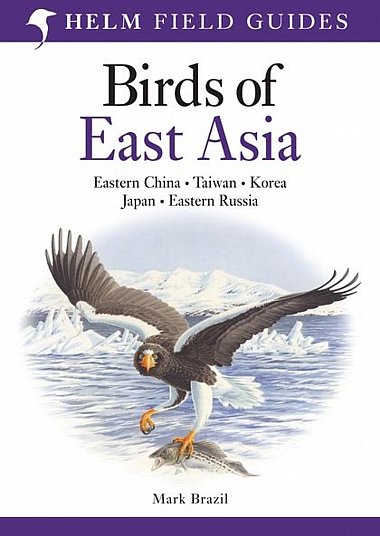
What's not included in your holiday price:
- travel insurance
- drinks & other personal expenses, laundry fees etc.
Your Leaders:
Byoungwoo Lee has almost 2 decades worth of experience developing and leading tours in South Korea. He has won awards for his work and we are delighted to welcome him back to Heatherlea for this unique, autumn tour!
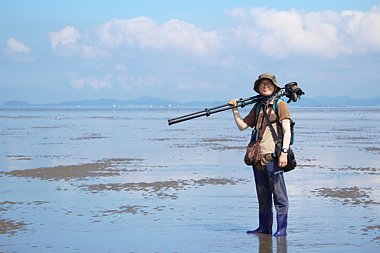
Byoungwoo Lee
Byoungwoo will be joined by one from the Heatherlea team on this tour.
More holiday information
Accommodation: We stay at comfortable hotels throughout and all rooms have private facilities.
Food: All meals are included (three meals per day). A good range of Korean food and drink will be available to sample. South Korean cuisine is largely based on rice, vegetables, seafood and meats with the famous kimchi served at almost every meal! Korean chicken, Bibimbap (rice, meat and pickled vegetables with a egg yolk), Japchae (glass noddles in a broth) and Korean Dumplings are all specialities of the region.
Walking: Fairly easy for most of the tour, on good paths and trails over mostly level ground. On Yubudo Island we will be on our feet all day so a walking pole may prove useful. On Baengnyeong we have ground transportation, but if there are good numbers of birds around we may need to spend lots of time birding on foot in order to find them!
Weather: Expect a varied conditions, October temperatures along the west coast range from 10C to 20C. You should being layered clothing including good jackets and good walking boots, plus a hat and gloves as it can be cooler in the north.
Insects: There are unlikely to be any biting insects.
Visa: United Kingdom citizens will need a passport valid for at least six months from date of departure. A tourist visa is not required to enter South Korea, though please check at least 12 weeks prior to travel.
Flights: Scheduled return flights from London to Seoul.
Ground transportation is by comfortable mini-bus.
Optics: You should bring binoculars and a telescope may prove useful for scanning through large flocks of birds. Good photographic opportunities are also expected, though please note bird watching will take priority on this tour.
Other birding and wildlife holidays in South Korea
Why choose Heatherlea for your birding and wildlife holiday?
Our overseas holidays are planned with care to offer great birding and wildlife, led by capable Leaders who really look after you. Every holiday is run the 'Heatherlea Way', and we hope our Overseas Adventures remind you of the quality and care so many of you enjoy in Scotland. That means rewarding and exciting days in the field, and good quality accommodation and meals, with a real flavour of the country we are visiting. Heatherlea always seek to include the personal touches that make all the difference.
Heatherlea holidays are not ‘dawn to dusk’ expeditions. Our less-intensive approach is ideal for those who want to relax whilst experiencing the best wildlife watching, and wherever possible we organise early or late activity on an optional basis. We also take sensible breaks when in very hot places and regular comfort breaks on every holiday whenever possible. All itineraries are planned carefully around the best wildlife opportunities, and you won’t miss out on memorable wildlife, whilst enjoying relaxed, informal days that are great fun.
The really important part of any wildlife holiday is the experience for you, our valued customer. Heatherlea invest in many things to offer you the best possible service;
- We have been organising birding and wildlife holidays for over 30 seasons, and have a highly experienced and capable office team. We also offer a telephone and email service outside normal office hours.
- Heatherlea overseas holidays have a maximum of 12 clients per trip, putting the emphasis on personal service, and helping you get the best possible experience.
- Our holidays often include things which others might invite you to pay yourself, for instance Departure Taxes and tips to hotels.
- All elements of our holidays are sold under our own licence, ATOL 6113. Under ‘Flight-Plus’ legislation it is a legal requirement of any tour operator to hold an ATOL licence for the supply of any overseas holiday where a flight is involved, if that holiday includes either overseas accommodation and/or car hire. It can be a criminal offence for an operator to book flights as part of a package without an ATOL licence. Heatherlea also hold full Tour Operator Insurance for your added protection.
- Heatherlea is your complete wildlife holiday provider. Our ‘Back Office’ team can organise all your pre-flight and other travel needs. Our specialists will help you book the right services, at the best price. Book holiday extensions through us, and your ATOL protection is extended further. We don’t charge extra for this service.
- Heatherlea is a limited company, registered in Scotland, and registered to pay VAT (applies to all holidays within the European Union).
Trip Reports
Coming Soon
- Free Bird Guide
FREE copy of Birds of East Asia with every room booked on this holiday.
- Enquire

